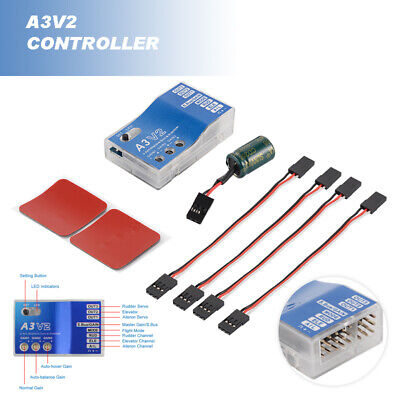The4High2Flyer0
Member
I am just getting into this hobby but if I’m honest ive been doing research on this hobby for well over a decade (I was about 8 then I say my first rc plane. I’m 20 now)
Sooooo…I’ve ordered the Ft Guinea pig speed build bundle, I also have ordered flysky FS ST8 that comes with the sr8 receiver with the ant protocol.
(I’m not exactly sure if Tx & Rx protocols matter when choosing a flight controller)
That being said I already have a post about me starting out on the Guinea pig
The main reason I’m making this post is because i don’t necessarily have the ability to pay club fees so I can’t exactly ask someone for some lessons.
So I’m leaning towards flight controllers.
The ft aura 5 lite

is a option however it’s a bit pricey($60) for me and I don’t necessarily have a computer that will download the software to change any of the settings (also why I can’t necessarily use a flight simulator) i do like the 6 axis
On the other hand
The hobby eagle a3pro v2

This option is a bit cheaper ($38)
And it’s a little more simple.(won’t have to use POS PC) Another 6 axis gyro, but there’s a few more wires to deal with so it may get confusing there.
In conclusion what im asking from this community. Is it worth spending the extra $$$ on a gyro system that I’m not going to be able to use the full capability of, or should I just go with the cheaper option and get a basic 6 axis gyro. Keep in mind I’ve never even touched a simulator so I’m basically going in this off the deep end. I understand I’m going to crash… a lot. I would like to minimize that inevitable by using a Flight controller. Honestly im leaning towards the hobby eagle a3pro v2. Mainly for its simplicity.
If im still being honest dont know of ether of them will bind to my receiver
P.S. if any one knows of some cheaper alternatives please let me know
Sooooo…I’ve ordered the Ft Guinea pig speed build bundle, I also have ordered flysky FS ST8 that comes with the sr8 receiver with the ant protocol.
(I’m not exactly sure if Tx & Rx protocols matter when choosing a flight controller)
That being said I already have a post about me starting out on the Guinea pig
The main reason I’m making this post is because i don’t necessarily have the ability to pay club fees so I can’t exactly ask someone for some lessons.
So I’m leaning towards flight controllers.
The ft aura 5 lite

is a option however it’s a bit pricey($60) for me and I don’t necessarily have a computer that will download the software to change any of the settings (also why I can’t necessarily use a flight simulator) i do like the 6 axis
On the other hand
The hobby eagle a3pro v2

This option is a bit cheaper ($38)
And it’s a little more simple.(won’t have to use POS PC) Another 6 axis gyro, but there’s a few more wires to deal with so it may get confusing there.
In conclusion what im asking from this community. Is it worth spending the extra $$$ on a gyro system that I’m not going to be able to use the full capability of, or should I just go with the cheaper option and get a basic 6 axis gyro. Keep in mind I’ve never even touched a simulator so I’m basically going in this off the deep end. I understand I’m going to crash… a lot. I would like to minimize that inevitable by using a Flight controller. Honestly im leaning towards the hobby eagle a3pro v2. Mainly for its simplicity.
If im still being honest dont know of ether of them will bind to my receiver
P.S. if any one knows of some cheaper alternatives please let me know

